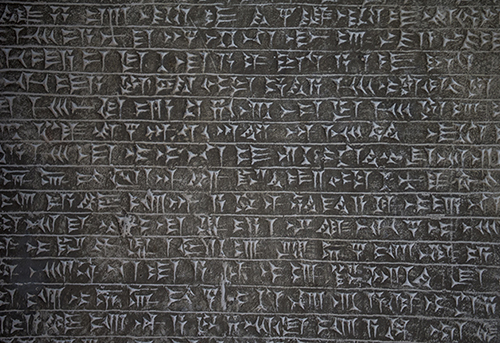
Codifying the ownership of property
Review "Patriarchal Monotheism: Codifying the ownership of property".

"The Code of Hammurabi or Babylonian law code where 'an eye for an eye' comes from is documented on this copy of the famous stele. The original stele resides in The Louvre in Paris." This image and quote was found on the Jonesblog, Scientist, Photographer site, recording a visit to the Pergamon Museum in Berlin. Visit the blog site to see more.
The Code of Hammurabi is a well-preserved Babylonian code of law of ancient Mesopotamia, dated back to about 1754 BCE. It is one of the oldest deciphered writings of significant length in the world.
The code is inscribed in the Akkadian language, using cuneiform script carved into a basalt stele in the shape of a huge index finger.
Read an extensive article about the Code of Hammurabi.
 View a much larger version of this image and more details about the Code of Hammurabi...
View a much larger version of this image and more details about the Code of Hammurabi...
In Code of Hammurabi: Babylonian Laws, Encyclopaedia Britannica says, "Code of Hammurabi, the most complete and perfect extant collection of Babylonian laws, developed during the reign of Hammurabi (1792–1750 BCE) of the 1st dynasty of Babylon. It consists of his legal decisions that were collected toward the end of his reign and inscribed on a diorite stela set up in Babylon’s temple of Marduk, the national god of Babylonia. These 282 case laws include economic provisions (prices, tariffs, trade, and commerce), family law (marriage and divorce), as well as criminal law (assault, theft) and civil law (slavery, debt). Penalties varied according to the status of the offenders and the circumstances of the offenses."
|

